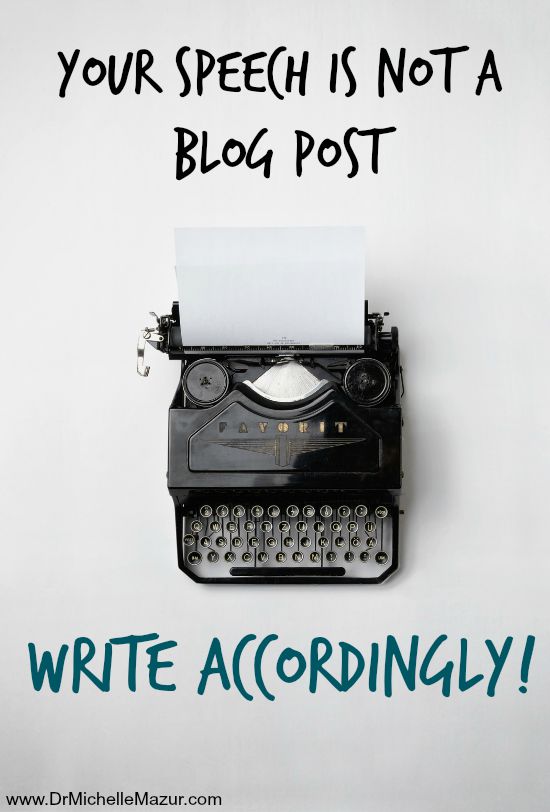Make Marketing Suck Less
Public Speaking Pet Peeve: Writing a speech like a blog post
By Michelle Mazur > August 4, 2015
Filed Under Public Speaking

How do you feel about math?
Was it the subject you loved more than playing outside on the swings? Or did math make you squinch up your nose like your mom was trying to shove brussel sprouts down your throat?
I love math (getting a Ph.D. makes you have mad respect for the numbers). I wish other speakers loved math as much as I did.
Especially when the math is simple like dividing the total amount of time you have for a presentation by the number of points you want to make in your speech.
Simple math is the best math and all speakers should be doing it because of one trend I’ve noticed in the speaking world that makes me cringe and instantly check out of any speech I attend.
And it’s this pet peeve:
Pet Peeve #4 – Writing a speech like a blog post
I shudder every time I hear a number above 3 in the title of a speech. I was chatting with a speaker friend of mine who told me about her recent 10-minute speech that was 7 tips about whatever she’s an expert in.
My brain screamed – DO THE MATH!!!!
With zero introduction or conclusion (and we already know how important I think those are) that gave her 1 minute and 42 seconds for each of her points. Frankly, 10-minutes is barely enough time to develop one point so that it makes a meaningful impact on the audience let alone 7.
I get it. You’ve read a lot of blog post that have told you how important a great headline is to get people to click on a link. Numbers are an awesome way to get people to click on a link, but a speech is not link bait.
Too many speakers don’t realize that how an audience processes a blog post is not the same as how an audience processes a speech. Blog posts let us skim (hey, are you skimming right now??) while speeches give the audience more time to attend, think, and apply your message as you speak.
Blog posts are one dimensional, visual experiences. Speaking is a 3-dimensional experience that can, if you do it right, engage all five senses (yep, even smell).
[Tweet “Audiences process blog posts and speeches differently. Act accordingly!”]
Too much information is overwhelming and useless to an audience because they can’t process it all. Heck, they can’t even keep up. They are still thinking about hack #1 while you’re talking about hack #4. Create space in your presentation so that the audience process, understand, and apply your message to their lives.
In a speech less is always more. You give less information to make a bigger impact. To do this focus on developing a BIG IDEA for your presentation. In fact, go read this case study on how a BIG IDEA impacts your presentation and even your whole business.
When you give a presentation your audience deserves better than a blog post. They need you to focus on one BIG IDEA and develop that. If you’ve got a speech that is crafted like a blog post, it’s time for some presentation rehab so you create a truly memorable experience for your audience.
Create Your One-of-a-Kind Message
Your 3 Word Rebellion is the Key to Growing Your Business & Impact






